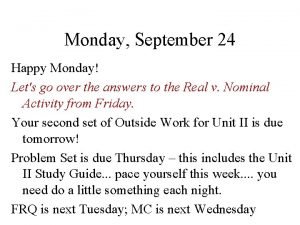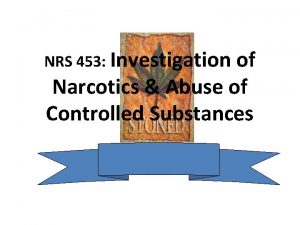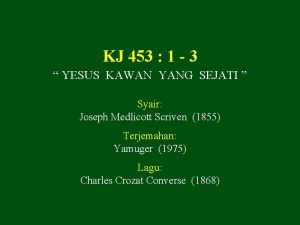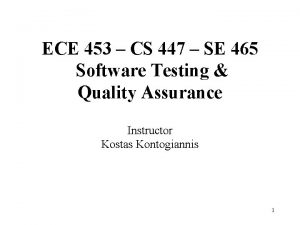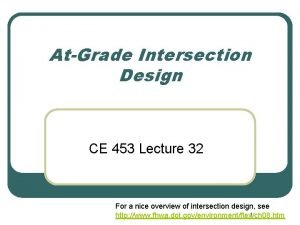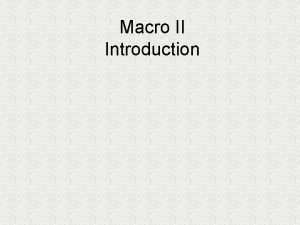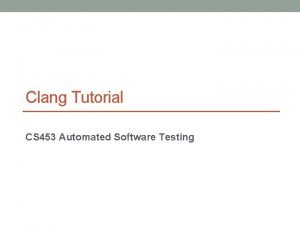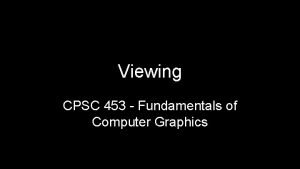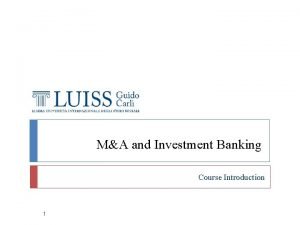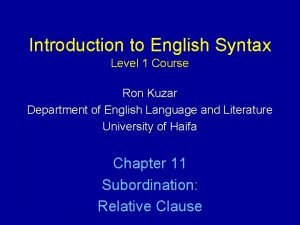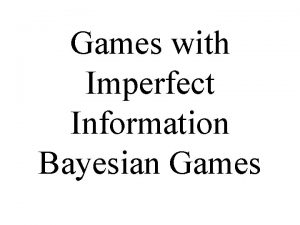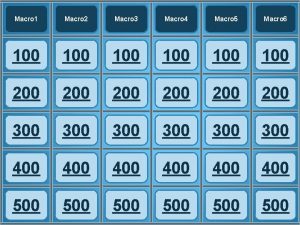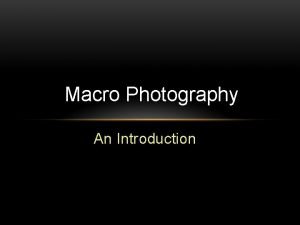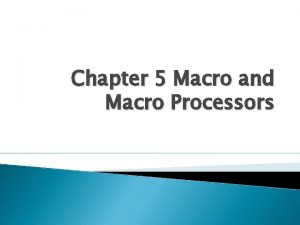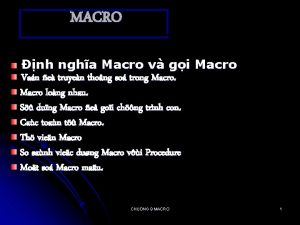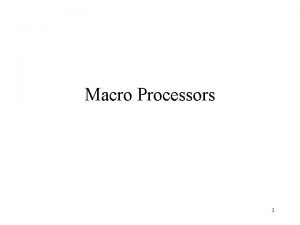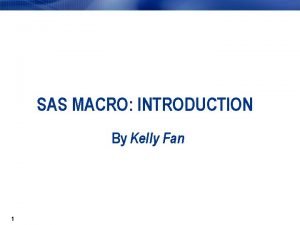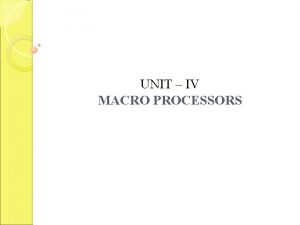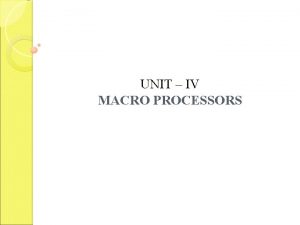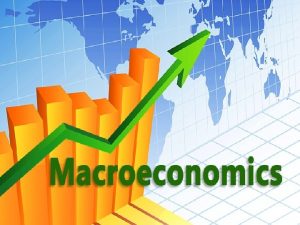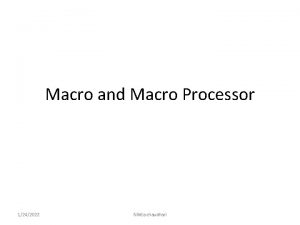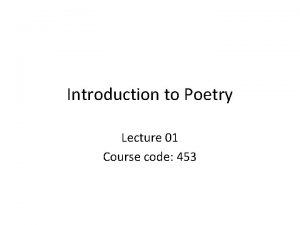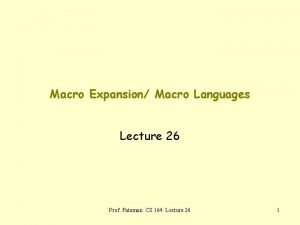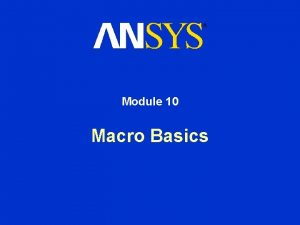Macro II Introduction Course information 5 EN 453





























- Slides: 29

Macro II Introduction

Course information • • 5 EN 453, 2 Lectures (6 ECTS) Lecturer: Pavel Potužák, Dpt. of Economics Office hours: Thursday 13: 15 -15: 15, NB 343 Website: http: //keke. vse. cz/studium/materialy/5 en 45 3 -macroeconomics-ii/ 2

Course information • Textbook: David Romer (2006): Advanced Macroeconomics, 3 rd edition (or higher) • Download: kekebooks. vse. cz (psw: keke 123) • Barro: Macroeconomics (1997, 2008) (Optional) 3

Course information • Distribution of points: q 40 Points for Midterm in the 8 th week (12 th for ill students, or in Exam period in case of even longer illness): Ø It covers 1 st part of the semester. (Solow, Ramsey) q 40 Points for Final test in the Exam period: Ø It covers 2 nd part of the semester (from Diamond to NKE). q 20 points for 5 Problem sets (HW). Each for 4 p. 4

Course information • Ø Ø 100 points altogether: 90 -100 points … 1 75 -89 points … 2 60 -74 points … 3 50 -59 … 4+ implies 2 nd attempt. Comprehensive test covering the whole semester for 100 p. (Then you need at least 60 points to pass. ) Ø 0 -49 … 4 (Failed) Ø No Selective Excuse („Omluveno“) in this Course (only General, i. e. all (or majority of) courses), since there will be a wide range of terms in the Exam period. 5

The Science of Macroeconomics • Master-economist must possess a rare combination of gifts. He must be mathematician, historian, statesman, philosopher —in some degree. He must understand symbols and speak in words. He must contemplate the particular in terms of the general and touch abstract and concrete in the same flight of thought. He must study the present in the light of the past for the purposes of the future. No part of man’s nature of his institutions must lie entirely outside his regard. He must be purposeful and disinterested in a simultaneous mood; as aloof and incorruptible as an artist, yet sometimes as near to earth as a politician. ” J. M. Keynes "Alfred Marshall, 1842 -1924" The Economic Journal, (Sept. , 1924) q Keynes(1936) as a father of Macroeconomics 6

The Science of Macroeconomics • Macroeconomics, the study of the economy as a whole, attempts to answer questions like: Ø Why have some countries experienced rapid growth in incomes while others stagnated in poverty? Ø Why do some countries have high rates of inflation while others maintain stable prices? Ø Why do all countries experience recessions and depressions and (how) can (and should? ) government policy reduce the frequency and severity of these episodes? 7

U. S. Real GDP per capita (2000 dollars) 9/11/2001 First oil price shock long-run upward trend… Great Depression Second oil price shock World War II 8

Growth rates of real GDP, U. S. 10 Real GDP growth rate 8 6 Average 4 growth rate 2 0 -2 -4 1970 1975 1980 1985 1990 1995 2000 9 2005



12

13

CR vs. EU GDP per head, EU 27 = 100 14

15

16

17







24

25

Kaldor's stylized facts -The rate of growth of output per worker is roughly constant over long periods of time, and its growth rate does not seem to diminish The shares of national income received by labor and capital are roughly constant over long periods of time -The rate of growth of the capital stock is roughly constant over long periods of time -The capital/output ratio is roughly constant over long periods of time -The rate of return on investment is roughly constant over long periods of time -The real wage grows over time

The ratio of labor income to total income in the U. S. Labor’s share of total income Labor’s share of income is approximately constant over time. (Hence, capital’s share is, too. ) 27

28

29
 Econmovies episode 6 worksheet answers
Econmovies episode 6 worksheet answers Keyword macro parameters in system software
Keyword macro parameters in system software 80 nin yüzde 30 u
80 nin yüzde 30 u Nrs 453
Nrs 453 Kj yesus kawan yang sejati
Kj yesus kawan yang sejati Ece 453
Ece 453 Yüzlüğe yuvarlama hesap makinesi
Yüzlüğe yuvarlama hesap makinesi Ce453
Ce453 Weerklank 453
Weerklank 453 Nct03946670
Nct03946670 En 453
En 453 Cs 453
Cs 453 Nrs 453
Nrs 453 Computer networks kurose
Computer networks kurose Normalized device coordinates
Normalized device coordinates Clang rewriter
Clang rewriter Ce 453
Ce 453 T junction flemish bond
T junction flemish bond Course number and title
Course number and title Chaine parallèle muscle
Chaine parallèle muscle Information letter
Information letter Connect student registration information course
Connect student registration information course Introduction to banking course
Introduction to banking course Imbe introduction course v2
Imbe introduction course v2 Software engineering 1 course outline
Software engineering 1 course outline Ron had a course introduction
Ron had a course introduction Simplex sentence
Simplex sentence Ron had a course introduction
Ron had a course introduction Incomplete information vs imperfect information
Incomplete information vs imperfect information Middle school introduction paragraph examples
Middle school introduction paragraph examples
